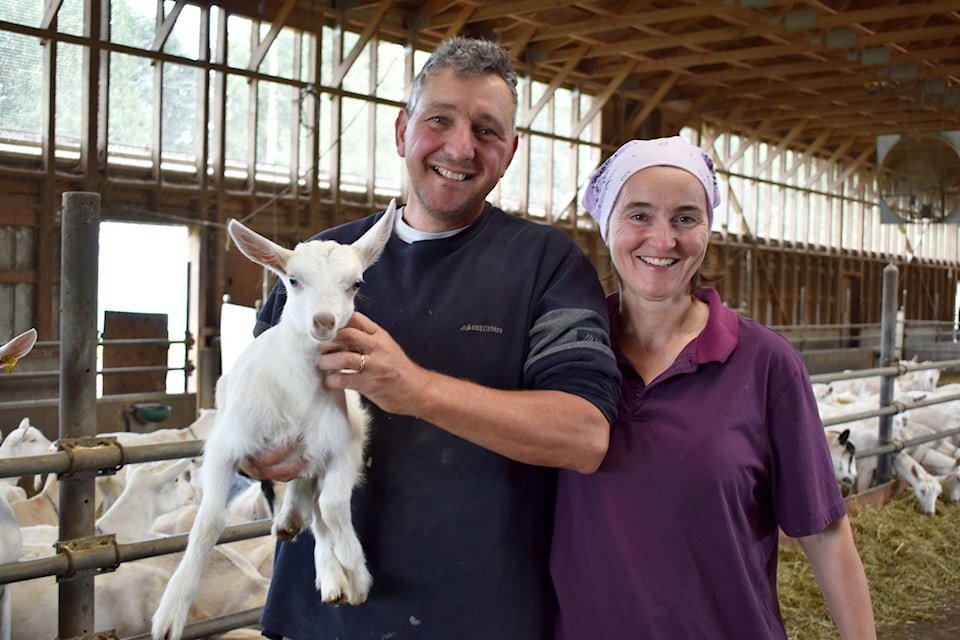Do you have what it takes to be a goat milking champion?
That’s the question posed every year during the Agassiz Fall Fair’s celebrity goat milking competition, which sees local dignitaries test their milking skills on stage.
According to Markus and Andrea Flukiger, who bring their goats from the Agassiz Goat Dairy to the competition each year, it’s harder than you think.
“It’s pretty popular,” Markus said. “I guess it’s because there’s cops involved, there’s the principal from the school.
“To see how they fail,” he added, laughing.
The Flukigers have been milking goats in Agassiz for nearly 20 years, having started the goat dairy after deciding that cattle dairy herds and their respective quotas were too expensive.
RELATED: The goat who ate Christmas
For most of that time — Andrea thinks it’s been around 16 or 17 years — the Flukigers have also been supplying goats for the milking competition.
Overall, the experience has been a good one, for the Flukigers and their goats. There was one year when a goat escaped — and was quickly recaptured after its venture through the fairgrounds — but typically the goats are happy to stand on a pedestal and be milked by those who might not really know what they are doing.
“After the first few minutes, then they are okay,” Markus said.
The white goats, a breed which Markus called the Holsteins of the goat world, are the best suited for the competition. But other goat breeds are also around, to bring some colour and excitement to the competition.
“Every year it’s different,” Andrea said. “Some they want to jump off the table. Some are just like rocks. Some kick, but you can’t stop that.”
Any contestants with farm experience — and thus, more experience milking — will be handicapped in some way, such as being blindfolded.
(One year, a councillor was blindfolded for the competition, but still managed to win over his more inexperienced competitors.)
Each year, the Flukigers bring eight goats — six for the competition, and two as backups. This year, they will also be bringing a number of kids, so that human children can enjoy a little one-on-one interaction with the baby goats.
This year’s celebrity goat milking competition will begin at 2 p.m. on Saturday at the outdoor stage.
How do you milk a goat?
| Milking is a technique, and it's not as simple as just pulling down on the teat. (Grace Kennedy/The Observer) |
It’s not as easy as you think, and not as easy to explain either.
Unlike what may be popular to show in movies, milking requires more than just a downwards pull on a cow or goat’s teat.
A seal has to be created at the top of the teat, to stop the milk from moving back up into the udder, and then squeezed out into the pail or bucket.
This seal can be created by pinching the teat, or just above it, with the thumb and index finger. The remaining fingers then move to squeeze the milk out.
Andrea Flukiger likened it to squeezing icing out of a bag, while Markus Flukiger said you can imagine your fingers wiggling a bit like a snake.
Neither are perfect examples, they said, adding that it helps to remember the goats can take a fair bit of force.
After all, kids getting a drink from their mother often bang their heads against her udder, in an attempt to bring more milk down into the teat. So don’t be afraid of hurting the goats — their own kids probably did worse.
Of course, the best way to learn how to milk a goat is practice, practice, practice.
Unfortunately, in a goat milking competition on a stage in front of hundreds, there’s not a lot of time for that.
grace.kennedy@ahobserver.com
Like us on Facebook and follow us on Twitter
